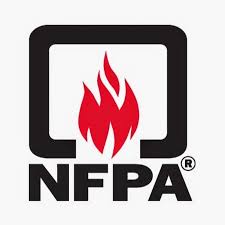Compliance of your emergency back-up power
OSHPD, Joint Commission, NFPA, and NEC code requirements have you confused?

Have you been fined for non-compliance in regards to your back-up/emergency power systems at a recent inspection? It’s not a fun surprise. Let Odyssey assist you in maintaining accurate records and keeping those maintenance standards compliant to the latest standards. Let’s break it down by system component.
Generators
Regular maintenance and logging of your run times is critical for compliance. Keep your records readily available in hard copy and online. The installation of a monitoring system logs run hours for you and provides instant access to your generator’s data. We recommend following all NFPA standards for regular maintenance of the equipment. We’ll get into more detail on this in the next blog post.
Monthly Load Testing
Performing a monthly 30 minute emergency load test is initiated by simulating a loss of normal utility power and requires the dynamic load to be at least 30% of the nameplate rating of the generator. “The result must be that the generator automatically starts-up and ATS automatically transfers to the generator as an emergency power source. Either action will satisfy the requirements provided the generator runs under load from a cold start for at least 30-continuous minutes.” The cool-down cycle period for the engine is not included as part of this 30 minute test.
Annual Load Bank Testing
If the facility does not meet the 30% of the nameplate rating during the monthly tests, then an annual load bank test over a 2 hour run duration is required. This test utilizes a supplemental load to gradually step the tested load to 75% of the nameplate rating and provides valuable information regarding the health of your generator. It can also remove exhaust build-up and help with wet-stacking.
36 Month Testing
Did you also know that a 4 hour load bank test run needs to be performed every 3 years? During this test, the load is gradually stepped up as with the annual testing, but the continuous run time must be a minimum of 4 hours and documented for compliance with the standards.
Automatic Transfer Switches (ATS)
No one likes the idea of a de-energized ATS service. Shutting down critical load is not to be taken lightly, but neither is the idea of an unplanned outage. Plan ahead for performing this service ANNUALLY to remain in compliance to the latest life-safety standards. We recommend all facilities should perform this service every 3-5 years. The ATS will need to be completely de-energized and the internal components cleaned, lubricated, and re-calibrated to original standards.
We look forward to walking you through more detailed compliance in the coming blog posts. Contact Odyssey Power for more information specific to your facility.
